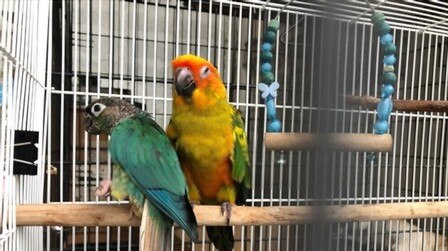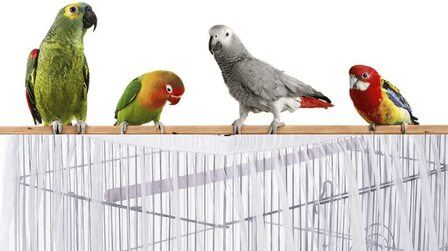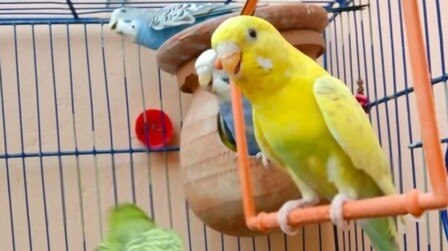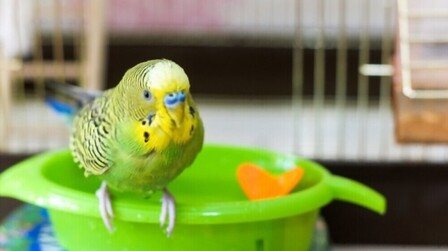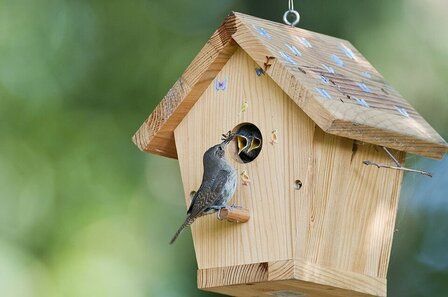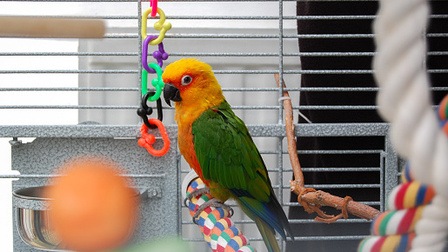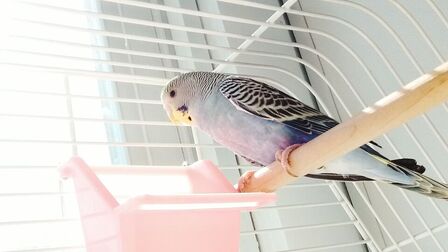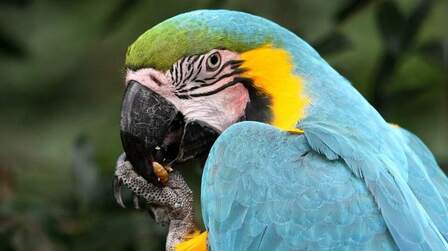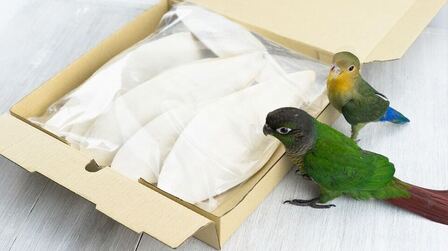As a hobby bird owner, there are many considerations when setting up a bird habitat. First, choosing the right wood for toys and perches is also essential as some woods are unsafe for parrots.
Parrots love to chew on different types of wood. Furthermore, wood has different hardnesses and some are softer than others depending on the size of the bird. So how to choose wood for bird perches.
1. How to choose wood for bird perches?
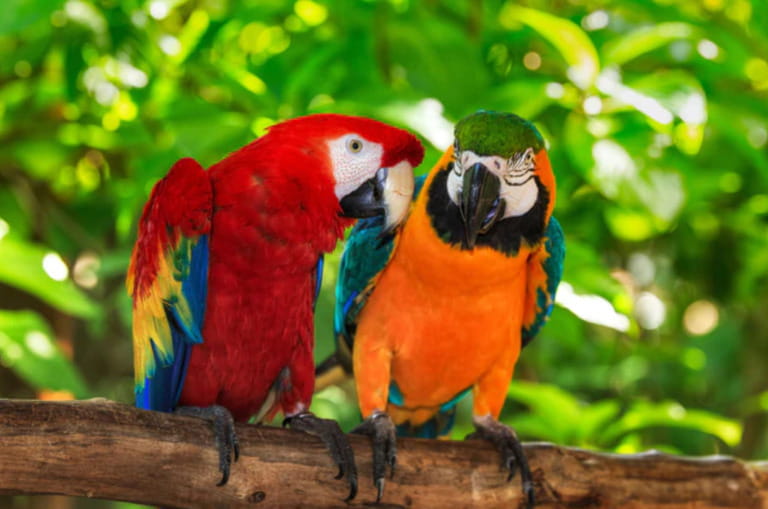
Some softwoods like balsa, yucca, and cork bark are great for small beaked birds. It's also great for birds that you're trying to learn to chew on. It is also quite soft and it is easier and more enjoyable to destroy them. Keep a broom handy if you're using this type of wood.
Hardwoods like manzanita and apple are good for birds that can chew well. African macaws, macaws, and similar-sized birds will enjoy chewing on hardwoods as it is great for maintaining beaks. Small to medium-sized birds do well with pines. From there, you can increase the difficulty of chewing by choosing thicker woods.
Wood Manzanita

Perches made of manzanita wood are very popular among small bird owners. They are made of durable wood and have long legs, many perch branches, and branches of different lengths and diameters. It includes the necessary hardware to attach to the birdcage and would be a welcome addition to your bird's perching options.
Natural wood

Also another option for the bird. This set of 5 perching birds is all 4 inches (10 cm) long and about 3/4 inch (1.9 cm) in diameter. No difference from all-natural wood perching birds, they are thoroughly cleaned before use in the birdcage to ensure that no insects or mold could harm your pet. . Also, strategically placed around your birdcage, these perches will give birds a chance to climb to different vantage points throughout the day.
2. How to make bird perches?

Step 1: First boil the wood to remove unwanted pests. Cleaning your furniture is super important
Step 2: Then dry the wood in a 200-degree oven for several hours. This will dry the wood to make sure there is no mold or bacteria
Step 3: need 2 washers, 1 wingnut, and 1 hanger bolt. This ensures that they are stainless steel. Parrot shops carry the necessary hardware for you to build your parrots
Step 4: use your drill, need to pre-drill a hole before attaching the hanger pin. This ensures the wood does not split. Should make sure that the drill bit is less than 1/4"
Step 5: You can install the hanger pin and drill it into the wood. Once the hanger pin is secured, the washers and wing nuts can be attached.
Step 6: Install the new perches into the parrot breeding environment and admire its useful work
3. Types of material bird perches

Wood or natural wood twigs make good perching spots because their different diameters help to allow the bird to distribute pressure to different areas under their feet. The branches from the tree are not poisonous and can also be used as a pole. However, these should be washed and disinfected by baking in an oven at 200°F for 30 minutes as the wood can harbor microscopic fungi and insects that can harm birds.
Furthermore, some woods can also contain oils that can be toxic to birds if chewed on. Instead, provide the bird with non-toxic, washed, and disinfected twigs such as apple, elm, ash, maple, or willow, which can be both useful and attractive in the cage.
In particular, wooden beans can help wear down bird's nails more effectively than beans made of soft materials. Perching birds also provide entertainment value for rodent-loving birds. Chewed and crumbly piercings need to be replaced. Sandpaper should not be used to cover the perch. These substances can cause irritation and sores under the bird's feet.
Untreated hemp or cotton rope can make great perches and soft twine poles.?Hemp or natural cotton rope can also create a soft surface, Easy to handle, and great for parrots to chew on. Logging must be carefully monitored. Although they can become torn when the bird gnaws, causing ropes or ropes to wrap around the bird's toes or be easily swallowed. Therefore, it is necessary to remove the bean liner and replace it. It's especially problematic with synthetic ropes and nesting materials that are never used. When the beans get dirty, they are cleaned in the washing machine or dishwasher.
Porcelain or cementitious materials among others provide texture and assist birds in safely removing beaks and talons. However, concrete perching should not be the only perching bird used in the cage. They can be abrasive to the bottom of the crow's feet, leading to irritation and ulcer formation. If you place porcelain perches in front of a food bowl, the bird will visit it, stand on it, eat, clean its beak on it, and then leave.
Hard plastic posts are easy to clean but can be slippery and poorly textured to grip. Larger birds can chew and splatter the plastic into sharp pieces, so plastic poles are not recommended for large birds. PVC pipes are stronger and safe for some birds to chew on, but some large birds can chew on them and potentially swallow pieces.
Stand perches are used when your bird is out of the cage. It can be placed anywhere in the house to allow you to interact with the bird or to let your bird have a different view of things for a while.
Stand perches have three parking spots for climbing and variation. The structure is lightweight and easy to transport from room to room and features a wide base for stability and mess control. Includes two stainless steel cups to be used as food or water bowls to keep your bird happy out of the cage.
Corner perches are a way to utilize some of that corner space in the birdcage. This type creates a small semicircle in the corner of the birdcage. And it provides a change of pace as it is seen as a flat surface and is used for your bird to rest during the day. The perch is made of wood and has three screws to secure it to the cage.
Heated perches are useful as a way to help birds stay warm (especially at night). Help add one to the cage so your bird has a place to go if it feels a bit cold. It is mainly made of scratch and bite-resistant plastic and is designed with different diameters to promote foot health. Simultaneously, it is controlled by a thermostat and the temperature gradually increases along the length of the perch so your bird finds the right spot.
Shower / PVC / window piercing
They have the same design made for use on windows or in bathrooms. You need to be careful with the window perch because the bird can be startled and injured by touching the window if it does not realize it is there. The same shower hose is a great addition to the parrot household and many parrots love to bathe this way.
Super Bird Creations showers are 3/4 inch (1.9 cm) in diameter and are designed for medium to large birds. It primarily attaches to the shower wall with three heavy-duty suction cups, is sustainably built, and can fold flat against the wall when not in use.
Conclusion
On the market, there are many types of materials to make the best bird perches, including Wood Manzanita or natural wood,...
However, the selection of materials needs to be careful because your pet is easily affected by some external factors such as weather, food, and birds' daily activities, but choose the right and disinfect the wood before bringing it in. The cage should also be thoroughly inspected.
As this provides your pet with a variety of beans and they will be healthier and happier.

